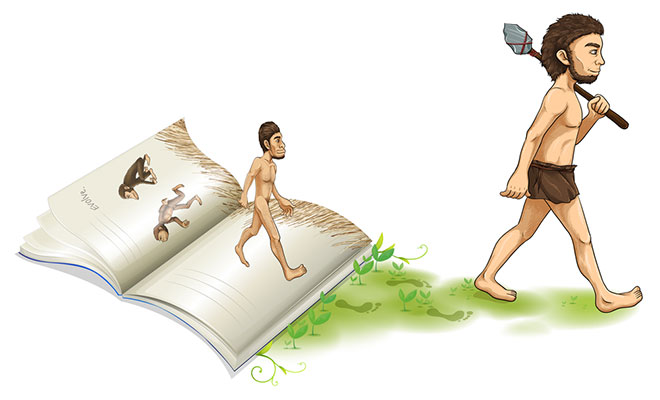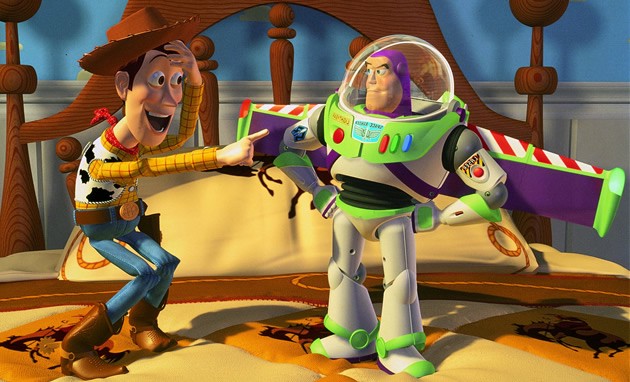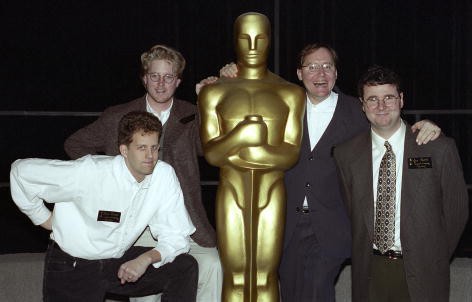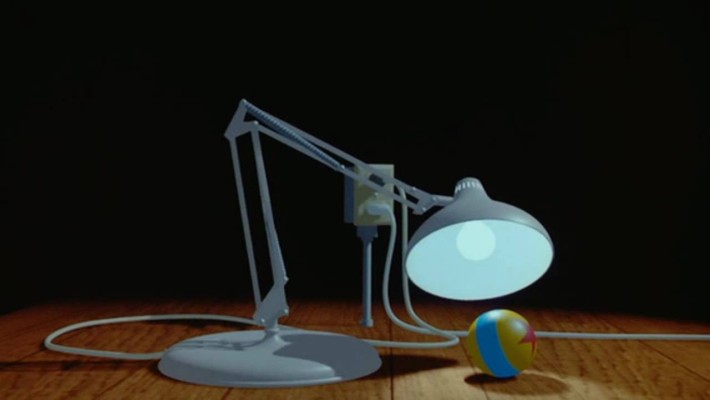
Technology and the Evolution of Storytelling
It is such an exciting time to be a filmmaker.
I do not believe the notion that the cinema is dying or dead because it’s amazing what technology can do to the cinematic storytelling.
What’s great about film is it constantly reinvents itself. It started as a sheer novelty, those images moving on the screen.
Then it went and every step of the way a new technology started being added — sound, color.
What happens is the film grammar of storytelling evolves and changes as well. The technology goes directly with the evolution of the storytelling.
The way films look —it started with old 35mm motion picture cameras, to color with the three-strip Technicolor, to cameras that weighed hundreds of pounds and had to be on dollies and cranes — that was the film grammar of the day.
The limitations of the technology being used to shoot the films set up what we’ve learned as film grammar.
Then, we came to lighter cameras, to handheld cameras, steady cams, and on and on, all the way down to now.
There’s a unique thing to a GoPro.
There’s a unique thing to an iPhone — the way things are shot and the way it’s held. It just gives it a vibrancy you’ve never been able to have before.
I believe new film grammar is going to come from these things.
It evolves, it changes, and it’s in great part because of the technology.

Walt Disney in 1939 receiving one Oscar statuette and seven miniature statuettes from Shirley Temple for “Snow White and the Seven Dwarfs”
In my own field, in animation, a seminal film in the history of animation is Snow White and the Seven Dwarfs, Walt Disney’s first feature-length film.
People thought Walt was insane.
“People aren’t going to sit still for a feature-length cartoon. Are you nuts?”
But Walt was a visionary.
Walt saw beyond what people were used to. They were used to the short cartoon.
It’s interesting how people cannot see beyond what they’re used to.
There’s a famous statement by Henry Ford that before the Model T if you asked people what they wanted, they would say, “A faster horse.”
My own partner at Pixar for 25 years, Steve Jobs, never liked market research. Never did market research for anything.
He said, “It’s not the audience’s job to tell us what they want in the future, it’s for us to tell them what they want in the future.”
If you use technology correctly, you can change opinions overnight.
There’s a great statement I love. It’s that you only get one chance to make a first impression.
First impressions are nearly impossible to get people off of if they have the wrong impression.
I remember when I first saw computer animation. It wasn’t being used for much at the time. It was really geometric, sterile and cold, but I was blown away by it. Not by what I was seeing, but the potential I saw in it.
It was true three dimensionality with a control that we had in hand-drawn animation. I saw the potential in computer animation and was like, “This is great. Everybody, can you see this?”
But everybody was saying, “It looks like… It’s too sterile. No, I don’t like it.”
I realized they were judging from exactly what they were seeing.
People always push back saying, “It’s too cold, too sterile.”
In the early days of computer graphics, it found its way into special effects.
There were some people who didn’t understand the medium and thought it could do everything. There was this company that tried when they were making a movie called Something Wicked This Way Comes.
They had worked on Tron, did some effects, and they had a very charismatic effects guy that convinced them they could create this magical circus that would erect itself — this evil circus comes to town.
Disney bought in on it and they worked for a very long time. I had a very dear friend working on it.
It was way beyond what the computer could do at that time. They ended up cutting the entire sequence out of the film.
That set back computer graphics in the effects world years, because everybody remembered that experience.
It was because people didn’t understand what the technology could do.
About six years after that I was working at Lucas Film’s computer division and Dennis Muren, the brilliant Dennis Muren, Effects Director at ILM, came over to me and said, “We have this effect in a film called Young Sherlock Holmes, and we don’t know how to do it. I’m thinking computer graphics.”
It was only six shots. We said, “Let’s try it.”
It was some of the hardest things we ever did, but I’ll never forget when it came out — the effects industry, people from all over the world, had no idea how it was done.
But it worked. It fit in there. It was nominated for an Oscar for best visual effects.
We were so excited. But it was focusing on understanding the technology and pushing it to places that we couldn’t.
The goal was to make the technology invisible.

Pixar co-founders Ed Catmull, Steve Jobs, and John Lasseter.
At that time when we rendered things, everything kind of looked plastic-y.
So we started thinking about a subject matter that lent itself to the medium at that time.
“Everything looks like plastic, so what if the characters were made of plastic? What if they were…toys?”
That’s one of the reasons why we leaned into toys becoming alive as a subject for our very first feature film, Toy Story.
It was about the toys that lent themselves to the medium at that time. We chose toys that worked for that.
In fact, it was better in CG than any other medium we could have done because we could make Buzz Lightyear feel like he was made of plastic and ball-and-socket joints and we had screws and scratches and decals and all this stuff you could not have done in any other medium.
When it came out, our main focus was not the technology.
What I was scared about was that people would be like, “Oh, it’s the first computer-animated feature film.”
We made sure Disney, and all around the world, didn’t sell it as “The First CG film.”
You sell it as a great motion picture, because that’s how we made it.
We focused on the story and hiding the technology.
It came out and people loved it. You watch it today and it’s just as entertaining as the day it came out.

Woody and Buzz in the original “Toy Story”
Like I said, you’ve only got one chance to make a first impression.
Unlike Something Wicked This Way Comes, Toy Story was the number one film of the year it came out.
It was a huge hit and everybody started looking at this as a viable filmmaking medium.
Overnight, the opinion changed. Because the technology was used in the right way, telling the right story.
Alfred Hitchcock is one of my favorite filmmakers and one of the reasons why I’ve studied and admired his films is that guy used new technology in incredible ways, but it was completely invisible in everything he made.
You study his films and realize there’s no way he could have made that film, that shot, without that technology.
But he didn’t want you to notice it.
We focus on entertaining people in new ways, and if you focus on the technology too much you get caught up.
It’s not the technology that entertains people, it’s what you do with the technology.
It’s important, I believe, to make the technology invisible, but have it push to do something new.
That’s when you make real breakthroughs.
If you love a technology, if you really, really, really, really love a technology, then dig into it.
Learn as much as you can. It’s fun. That’s what I did with CG.

From left: Pete Docter, Andrew Stanton, John Lasseter, and Joe Ranft, nominees, Writing (Screenplay Written Directly for the Screen) (TOY STORY), at the 1995 (68th) Academy Awards Nominees Luncheon.
I was trained by these great Disney artists. I drew. It was all about story, character drawing, all that stuff, but when I got into computer graphics I was like, “Oh, my god, this is so much fun.”
I wanted to learn as much as I could.
The more you dig into the technology and the more you learn it, you are going to get ideas you would never have thought of without knowing your technology.
The kind of shots you can get from an iPhone that you cannot get with any other camera. Use it.
GoPros: use it. Be inspired by it.
Try things. It’s digital. Get another memory card, for God’s sake.
You will start creating ideas that lend themselves to these things and start looking new.
When you start doing something that’s truly new you will hear, “It’s not going to work.”
Walt Disney heard it. I heard it with CG.
“ Computer animation is so cold.”
Really? No, I don’t think so.
You think about it, it’s true for color, sound, feature length animation, CG.
The first feature film shot on an iPhone? “That’s not going to work.”
Yeah, it’s going to work. It’s going to be awesome.
The first feature shot with a GoPro? It’s going to be awesome in the hands of the right people.
The reason why they say this is because it’s not what people are used to.
Before the Model T, you ask people what they want and they’re going to want a faster horse. It’s not what they’re used to.
When I started working with CG, I could not wait for the tools to become commonplace.
In the early days, when SIGGRAPH was the only place you could go and see computer graphics, it was always fun. Everybody would cheer for reflective clear balls floating over a checkerboard and be amazed by it.
It was in a world where all of the art and the CG was being created by the guys who were writing the program.
There was no such thing as off-the-shelf software. There were no tools available.
They were writing their software and then creating it, and they were kind of the artistic guys within the computer world.
They were just showing off the technology. I kept thinking to myself, “Yeah, but they’re really ugly. This is like boring. Let’s entertain people.”
I couldn’t wait because I always viewed the technology as simply a tool.
Can you imagine the guy who invented the pencil and all of the things that that invention has brought the world?
That’s what I was feeling like with CG.
I couldn’t wait to get it in the hands of everybody to see what they would do.
The mediums we use are simply tools for expressing your art.
Your goal as a filmmaker is to entertain. And to entertain people is about story.
It’s about characters.
It’s about connecting with that audience.
It’s making that connection where you really deeply entertain an audience.
But it’s not just an art form that we’re in. It’s a business. Entertaining stuff simply just does better.
If you can make people laugh, cry and feel things with a film you make, you will be successful.
No matter what medium, any way you’ve distributed it — it all comes down to your knowledge skills.
What makes a good story? How can I tell it properly?
People get so excited about new technologies. I’ve had the question so many times from young people, “What software should I use?”
You know what? In your lifetime the software and the technology will change so drastically, it doesn’t matter.
What matters is when you’re young, you get excited about learning the fundamentals.
It sounds so boring to young people when they can make a movie so quickly and release it to the world and get millions of Likes.
“It’s so boring. I know how to do that.”
Trust me, you don’t.
The fundamentals of good storytelling, the fundamentals of film grammar, even though it was made with old Mitchell cameras and stuff like that, learn it.
Learn the fundamentals of animation. Learn the fundamentals of physics and things like that, of basic color, basic design.
This is the foundation of the building of your career.
Then, as you get into new technology, you’ll know exactly what to do.
And your work will not be about the technology. It will be about connecting and entertaining people.
No matter the length of your film — 30 seconds, five minutes, 22 minutes, feature length — it needs a story. It needs a beginning, a middle and an end.
It needs to deeply connect with people.
There are big differences between storytelling at 30 seconds or a feature film. Big differences.

We did a series of short films in the beginning of Pixar and we did television commercials.
We were thinking the next step for us was to do a Christmas special, but Disney threw us in the deep end, and we developed a feature film.
It was amazing what we didn’t know.
But I went back to my traditional training I had learned from my mentors — Frank Thomas, Ollie Johnston, and the great Disney animators that were still working at the studio when I started there — and the fundamentals of animation they kept talking about.
Ollie Johnston would turn to me and I was expecting something about arcs and lines and silhouette value and all that stuff.
He would turn and say, “John, what’s the character thinking?”
It was amazing to me, just that simple statement. It was not about the drawing.
It was never about the drawing to them. It was about that character and what it’s thinking.
Through pure movement they taught me to bring a character to life and give it an emotion, a personality, a uniqueness, and it was done through just pure motion.
So when I started working with a computer, I just brought that technology with me. As we started developing the story, it was always about emotion. It was always about emotion from day one with Toy Story.
It was about emotion, making you feel.
I’ve admired Walt Disney so much my whole life and part of it is because he entertained people like no other person in history has ever done. The way he makes you feel when you watch his movies, the way he makes you feel when go through that tunnel under the train station at Disneyland and you’re transported.
It’s about emotion and that connection.
Walt always said, “For every laugh, there should be a tear.”
It felt like that core emotion. That became the hallmark of what we tried to do at Pixar — to do it with the new technology.
I think the biggest thing for us is we studied films. We watched films religiously.
With Toy Story, it was a buddy picture. We watched every buddy picture we could find and analyzed it. Good ones, and it’s very important to watch bad ones too.
You start understanding what they did. Don’t copy things. It’s about understanding and learning.
Very, very, very important: Do not work in a vacuum.
You have to surround yourself with trusted people. You get so immersed in your work, you will not be able to see the forest from the trees. Frankly, you’ll be studying the pine needles and worrying about them.
You need someone to help you back up and take a look at the forest and see where things are working or not working.
And you need to surround yourself with people whose judgment you trust and they can be brutally honest with you.
As an artist, showing unfinished work to people is really difficult. It’s really hard. It always is hard. It always will be hard. It never gets any easier, but you have to do it.
Andrew Stanton, my creative partner at Pixar, has this fantastic phrase that I use all the time, “Be wrong as fast as you can.”
Trust me, when you go from an outline to a treatment, your first treatment sucks and you do revisions and talk to people and you get something working really great.
Go to your first draft of the script, it sucks. You do it a whole bunch of times.
For us, we go to story reels, the first story reel sucks. But the longer you say, “I’m not ready yet, give me a little more time, give me a little more time,” and like that, it’s not going to help the problem.
You’re just going to be polishing. You’re not going to see where it’s not working.
Get it up there. Throw it up there as fast as you can, talk about it, tear it back down, put it back up there. Keep doing this.
Surround yourself with people you trust.
Be thirsty for knowledge.
It will always make your work better. The market is changing really, really quickly.
Who knows what the business will look like ten years from now?
I know one thing for sure.
If you create characters people connect with and tell stories that deeply entertain and move them, the audience will come.
First published at medium.com.







